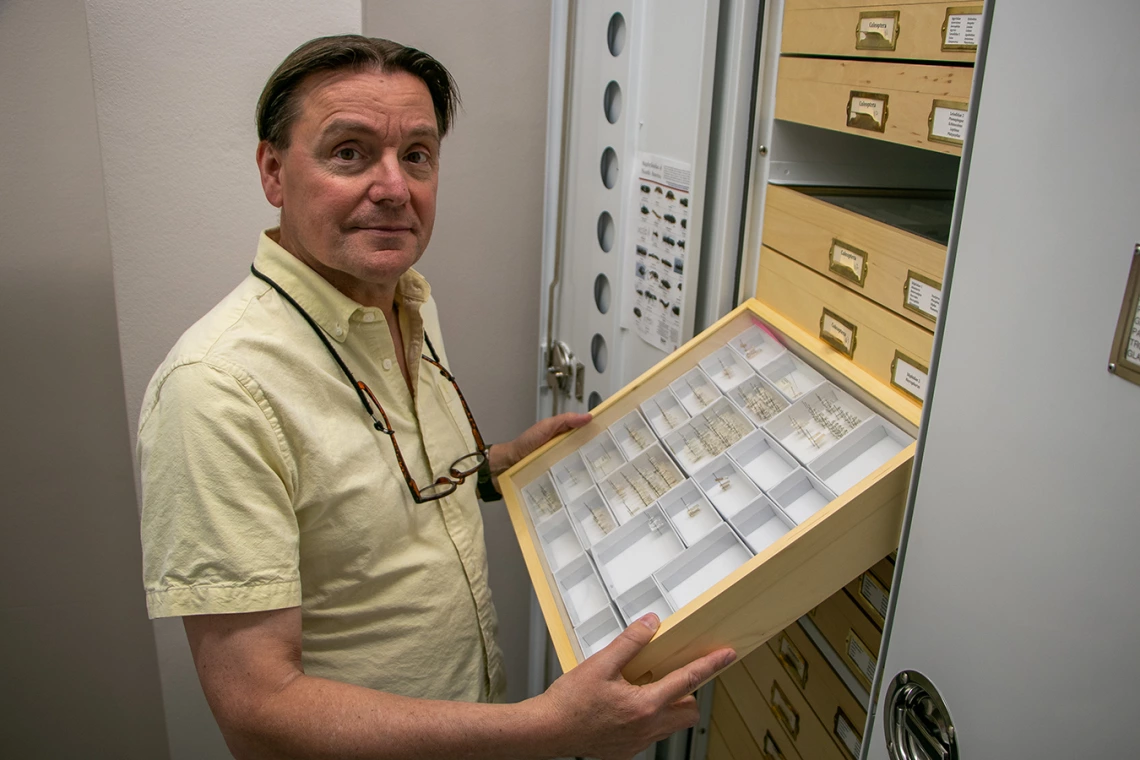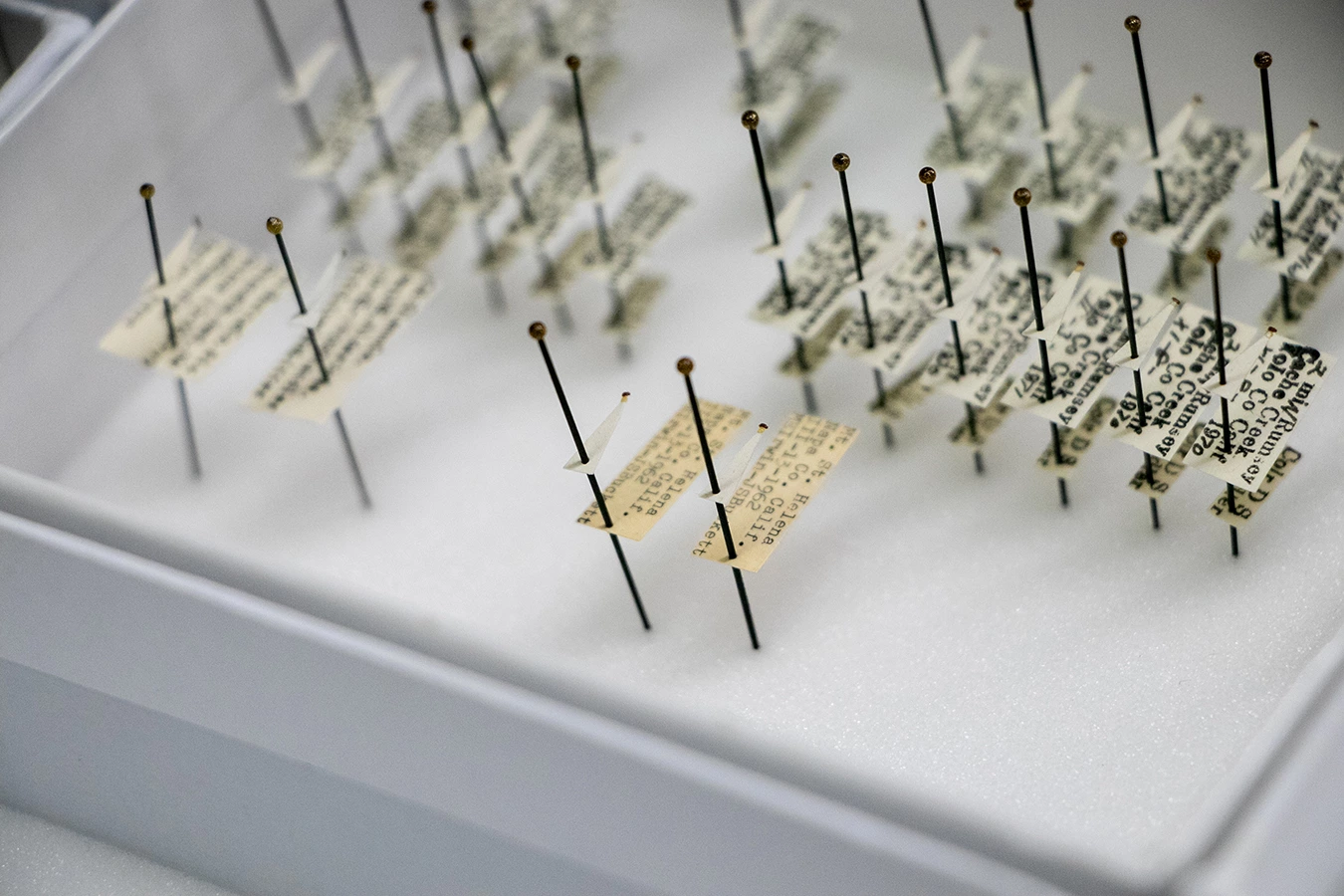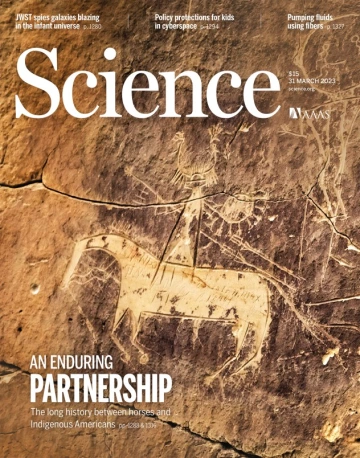Small bugs, BIG answers: What insects can tell us about the world
Gene Hall, manager of the University of Arizona Insect Collection, illuminates the significance of insects in understanding history and the world around us.

Elena Lopez
The world’s tiniest creatures can reveal big things about the Earth. Insect fragments found in research areas help scientists deduce a lot about the environment they were found. By looking at just a head, a thorax, or even part of a leg, entomologist Gene Hall can help identify insects that may unearth the answers to some of history's biggest questions.
“Some insects live on and eat certain plants, and have certain behaviors and life cycles,” said Hall. “Based on host plant preferences, you can make deductions based on what the insects were feeding on, what their habitat was like, and they give you a better idea of past environments compared to now.”
Hall didn’t always know he'd be living a bug’s life. As a young high school student, he volunteered to work weekends with Tucson herpetologist, botanist, and paleoecologist Thomas Van Devender at the Paleoenvironmental Labs on Tumamoc Hill. Hall quickly became interested in amphibians and reptiles, dedicating his first few years of college to working with the Herpetology collection at the University of Arizona Museum of Natural History.
Invaluable waste
In his work, Hall sorted through plant, mammal, reptile, and amphibian specimens found in packrat middens, which are extremely valuable piles of waste for researchers. Packrats build their waste piles over time out of materials in their area, including plants, bones, and bugs, and use their sticky urine to bind them into a mass, forming a midden. The rock shelters and caves in which the middens are built protect them from moisture and may help preserve their contents for tens of thousands of years.
“The fossils from these midden samples are important and useful because they tell you about the past habitats and climate and what was living in an area,” explained Hall. “Pack rats have a certain radius that they'll go out from their rock shelters, where they will collect plants and other items, bring them back to the nest, plus other organisms can wander into the shelter, or die within the nest debris pile.”
While working with midden samples, Hall developed a growing interest in bug specimens. He spent long hours at the University of Arizona Insect Collection (UAIC), comparing and analyzing specimens, and learning more about the regional insects and other arthropod species from Floyd Werner and Carl Olson, curator and manager of the UAIC, respectively. One night, while perusing the drawers of the UAIC, Hall came across some of the world’s tiniest bugs: the featherwing beetles, which range in size from 0.35 - 4.00 millimeters in length and are currently the smallest free-living nonparasitic insects known to science.

The featherwing beetles, which range in size from 0.35 - 4.00 millimeters in length and are currently the smallest free-living nonparasitic insects known to science.
Elena Lopez
“They were like little dots, I put them under a microscope for examination, and they appeared just like regular larger beetles, except very, very small” he said. “I learned they were the smallest beetles known to science. Then I just continued learning more and more about them, and eventually, that's what I focused my graduate degree work on in the UA Department of Entomology after finishing my bachelor's degree in Fine Art.”
After graduating from UA, Hall served as the insect collection manager at the University of Nebraska State Museum and then moved on to become the manager of the Invertebrate Zoology collection at the University of Colorado Museum of Natural History. In 2011, he returned to the UAIC to collaborate on a grant project with Wendy Moore, curator of the UAIC and associate professor of Entomology at UA College of Agriculture, Life, and Environmental Sciences. For the past 11 years, Hall has served as the collection’s manager, and also provides insect identifications for the Cooperative Extension’s Insect Diagnostics Clinic.
"It's very important to have the correct name on an identification, since everything we know about an organism is tied to that name,” Hall said about his work identifying insects. “That's why it's valuable to have resources like the UA Insect Collection and Cooperative Extension Insect Diagnostics providing that service."
Straight from the horse’s mouth
Identifying fragmented insect remains is frequently requested of Hall. In 2018, he was recruited to identify insect fragments associated with the horse remains from a Blacks Fork River site in Wyoming– work similar to the research he had conducted for ten years on packrat middens.
The request came from Greg Hodgins, who directs the University of Arizona Accelerator Mass Spectrometry Laboratory and specializes in radiocarbon dating – a radioactive decay-based method for determining the age of organic remains. Hodgins was a participant in a large study which sought to understand when domestic horses were first integrated into Indigenous lifeways. The project, led by anthropologist William Taylor with the University of Colorado Boulder, involved 88 individuals working across disciplines to track the early dispersal of these horses into the Great Plains and northern Rockies.
Identifying the insects found at the site was of great importance, as they could potentially help researchers better understand life at the time of the horse’s death. Beetle remains collected from the horse’s stomach contents were collected and later submitted to Hall for identification. The specimens identified included the Carrion Beetles (family Staphylinidae: subfamily Silphinae) Nicrophorus and Creophilus, and pupa fragments of an undetermined species of Diptera (flies).
Hodgins then radiocarbon-dated the insect fragments. The outcome suggested that at least some of the insects analyzed were not directly associated with the horse’s death and could therefore not be used to make inferences. However, other tooth and bone samples showed congruency in their dating.

The study concluded that horses of European descent likely disseminated from the southwest by the first half of the 17th century through Indigenous people’s trade networks. This was earlier than noted by 18th century European observers.
Hodgins and Hall were both among the coauthors of the paper, which was subsequently published in Science—one of the world's top peer-reviewed academic journals. The project earned the American Association for the Advancement of Science's Newcomb Cleveland Prize. Among 12,000 submissions to the journal, only 700 are published, and just one is honored with the award. The $25,000 prize was donated to establish a new endowment named in memoriam for the study co-author and cultural educator for the Sicangu Lakota People, Sam High Crane. The award funds will support research and training focused on Indigenous perspectives and young professionals in archaeology, archaeogenetics, and the museum sector.
Praised by the American Association for the Advancement of Science for weaving together cutting-edge genomics and archeozoological data to tell the story of how horses dispersed across North America, this project is a testament to the importance of comprehensive analysis and examination of all things big... and small.
